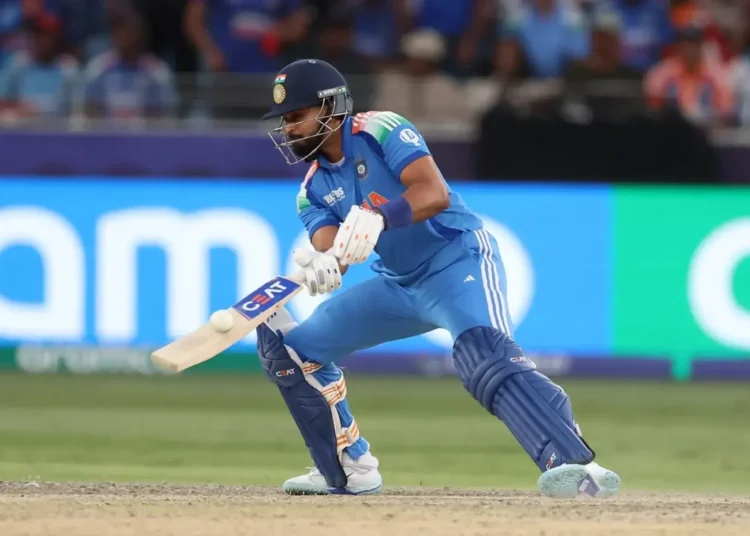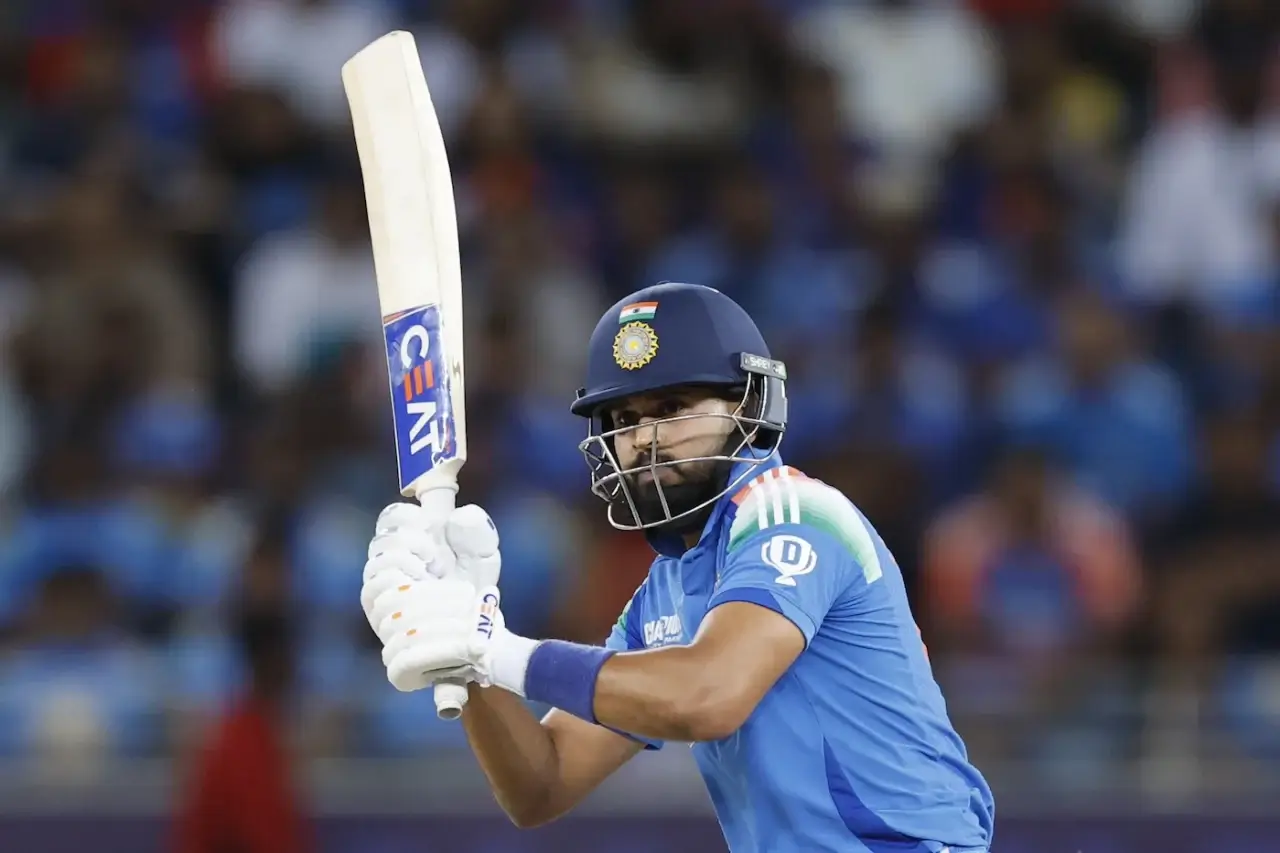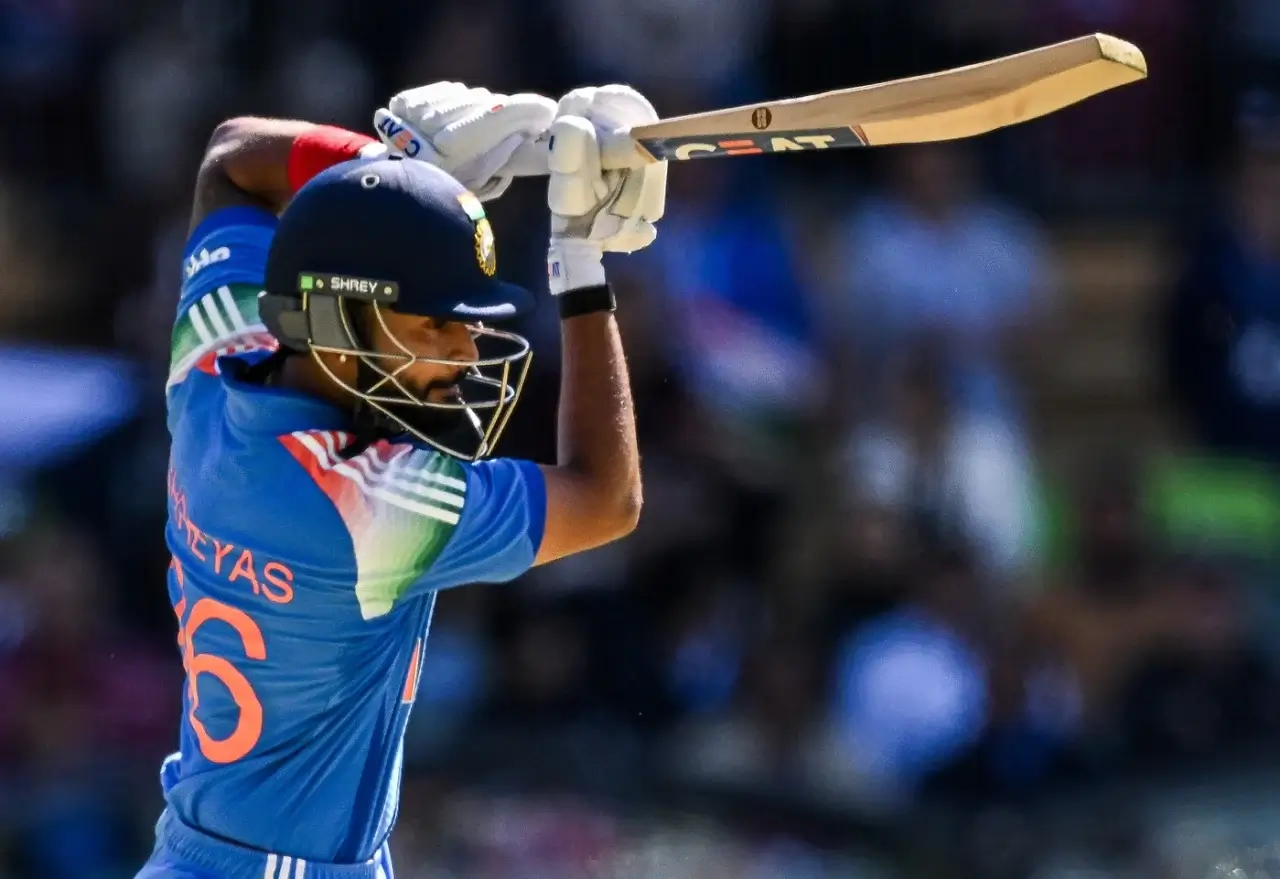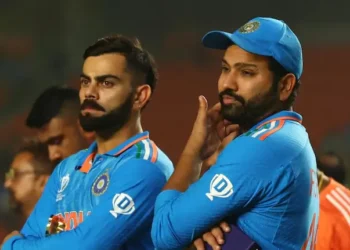Shreyas Iyer is quietly building a comeback story with technical precision. In Adelaide, he scored 61 runs off 77 balls using a more upright stance, a method he once abandoned but now trusts again. The result was a confident, assured innings on a pitch that punished most others.
The bounce in Australian conditions has always challenged subcontinent batters. But Iyer’s change in posture helped him meet it head-on. By standing taller and allowing his hands to react naturally, he countered short deliveries that earlier troubled him. His timing against pace looked smooth, his control balanced, and his confidence unmistakable.
Iyer’s decision to revisit his old stance came after deep reflection. Time away from Test cricket allowed him to rebuild both body and technique. The upright stance revival began in domestic games and continued in the Australia A series. Now it’s bearing fruit at the international level in matches against Australia.
For India, Iyer’s adjustment matters beyond one innings. It reflects adaptation, maturity, and understanding of modern ODI challenges. With the 2027 World Cup cycle already starting, India needs dependable middle-order batters. Iyer’s evolution may just be the balance India lacked in the format.
Why did Shreyas Iyer return to his upright stance?
Batting with a lower base helped Iyer for years, but not in Australia. The extra bounce made him mistime shots and lose rhythm. During domestic cricket, he realized the need to return to his upright stance technique. It allowed him to meet the ball’s rise more naturally.
“I wanted to stand taller where bounce is higher,” Iyer said recently. That thought led to sessions with his coach, revisiting his early Mumbai days. The result was a simpler, more balanced setup. His head stayed still, and his trigger movement became minimal. Against short balls, this stability made all the difference.
At Adelaide, where bowlers exploited uneven bounce, Iyer stayed calm. His 61 off 77 showed poise against pace and spin alike. It wasn’t flashy stroke play, but it was controlled and consistent. That innings marked his return to technical discipline.
Iyer now feels confident adapting to different wickets. “You must change stance as the wicket demands,” he said. His flexibility makes him a valuable ODI asset. When others struggled, he showed that technique can overcome conditions — not just power. For India’s future middle order, that lesson is priceless.
Bounce, balance, and the science behind Iyer’s success
The secret behind Iyer’s composure is his balance. The upright stance against bounce gives him more reaction time. With his back straighter, his eyes stay level with the ball. That allows him to judge lift early and adjust footwork instantly.
In Australia, this adjustment becomes crucial. Pitches offer steep bounce that can surprise even experienced batters. Iyer’s head alignment keeps his bat path straight. It also lets him punch through covers and pull with balance. The result is confidence, not caution.
This refined stance isn’t a reinvention — it’s a rediscovery. Iyer always had the technique, but injury interruptions changed his setup. Now, with regained strength and clarity, he’s combining science with instinct. It’s a technical evolution that meets modern ODI demands perfectly.
Shreyas Iyer’s importance in India’s middle order
The Indian middle order has long been a puzzle. Between collapses and experiments, stability has often gone missing. Shreyas Iyer provides that missing calm in the chaos. His ability to handle pace and spin equally makes him a vital link.
At No. 4 or 5, he absorbs pressure and rebuilds innings smartly. His shot selection suits middle-over phases where run rotation is key. Unlike power hitters, Iyer thrives on placement and balance. That blend of control and intent makes him unique in India’s current lineup.
His Adelaide innings highlighted this perfectly. When wickets fell early, he anchored without freezing. He shifted gears smoothly once set, proving that patience still has value. For young batters, he remains a model of controlled aggression.
In modern ODIs, middle overs win matches silently. Iyer’s consistency gives India an anchor in that crucial zone. He’s not the loudest performer, but often the most reliable. In a lineup filled with stroke-makers, he brings tactical intelligence that wins tournaments.
How does Iyer complement Rohit and Kohli’s batting rhythm?
When Rohit and Kohli attack early, Iyer bridges the momentum later. His innings tempo complements their styles seamlessly. He rotates strike, keeps pressure off, and builds steady platforms. That rhythm allows India to keep control through transitions.
With Rohit aging and Kohli adapting roles, Iyer’s role becomes vital. He doesn’t compete for dominance; he connects the dots. His ability to rebuild after early wickets defines balance. Without him, India’s batting sometimes skips structure.
Adelaide proved that connection again — Rohit’s aggression met Iyer’s stability. This trio remains India’s best ODI bridge between explosiveness and control. Their understanding ensures India stays steady in any condition.
How does Shreyas provide India with an ODI balance?
Every strong ODI team needs rhythm between hitters and controllers. Iyer provides that equilibrium naturally. His batting tempo matches modern pacing demands — quick without chaos. He can shift from defense to attack seamlessly, keeping bowlers guessing.
India’s recent struggles often came when the middle overs lost energy. Iyer’s ability to tick the score along solves that. His ODI batting balance complements both the top and lower orders. He links partnerships and stabilizes tricky conditions without losing momentum.
His adaptability also supports Shubman Gill’s developing captaincy strategy. With flexible strike rates and a calm temperament, Iyer allows tactical adjustments mid-game. He knows when to attack and when to consolidate — a rare ODI trait.
If India aims to dominate longer tournaments, players like Iyer will matter most. He’s neither flashy nor passive, but efficient and purposeful. In a team rebuilding its identity, his balance restores structure and reliability in every chase.
Why Shreyas, Kohli, and Rohit must play domestic cricket?
India’s senior batters carry unmatched experience, but domestic exposure refines rhythm. Playing domestic cricket before major tours keeps timing fresh and adaptability sharp. For Shreyas Iyer, that shift made a clear difference in Australia.
During his domestic stint, he tested his stance under different pitches. It prepared him mentally and technically for bounce and swing. For Rohit and Kohli, too, such exposure rebuilds reflexes lost in long breaks. Modern cricket evolves fast; regular game-time is the only antidote.
Domestic games also reconnect seniors with grassroots tactics. Facing hungry bowlers and varied surfaces polishes shot selection. It’s less about runs and more about awareness. That’s why BCCI’s push for domestic inclusion must stay consistent.
If India wants sharper starts and smarter finishes, experience must blend with rhythm. Shreyas has shown how preparation transforms confidence at the top level. The same can strengthen the entire core before big events like the 2027 World Cup. For context on India’s long-term ODI evolution, review the India vs Bangladesh timeline.
How does Shreyas fit into India’s ODI World Cup 2027 plan?
India’s focus on the ODI World Cup 2027 demands adaptable players. Iyer fits this plan better than most. His upright stance and calmness under pressure are assets for longer tournaments. He can play both anchor and aggressor based on match context.
By 2027, India’s ODI core will transition significantly. Rohit and Kohli might reduce roles, leaving gaps in experience. Iyer’s maturity and tactical clarity make him an ideal bridge. He can guide younger players while leading from the middle.
His technique suits South African and Australian pitches where bounce is key. In those conditions, his revised stance and controlled footwork will matter most. His ability to play seam and spin equally keeps India balanced across formats.
As selectors plan for the next cycle, Iyer stands as a central pillar. His fitness management and batting form will decide India’s middle-order strength. Adelaide may just be the start of his long-term ODI leadership journey.
Conclusion
Shreyas Iyer’s 61 in Adelaide wasn’t just runs; it was reassurance. His upright stance revival reminded fans that technique and adaptation still matter. Against pace, bounce, and scrutiny, he rediscovered balance and belief.
India’s ODI structure benefits immensely from players like him. In a format demanding calculation over chaos, his temperament shines. While others struggle with transition, Iyer has quietly evolved into India’s most reliable middle-order option.
Beyond Adelaide, his contribution stretches into future planning. As India prepares for the 2027 World Cup, his consistency becomes the backbone. His partnership understanding with Rohit and Kohli gives stability amid generational changes.
If Iyer maintains his current rhythm, he could define India’s ODI decade. A technically-sound, emotionally-steady batter who reads the game smartly — that’s what India needs. His story shows that sometimes, progress means going back to your roots.
India’s next ODI phase will rely on adaptability, not experimentation. And in that blueprint, Shreyas Iyer stands right at the center — upright, composed, and ready.
















